The bad news: A century after suffrage, women are still underrepresented in politics. The good news: We know what works to get women into power.
Aug. 26, Women’s Equality Day, marks the anniversary of the 19th Amendment’s certification—a milestone that granted American women the right to vote and expanded democracy in unprecedented ways. While it’s a victory worth celebrating, full enfranchisement happened later with the adoption of the Voting Rights Act in 1965, but it was never intended to be the end of the struggle.
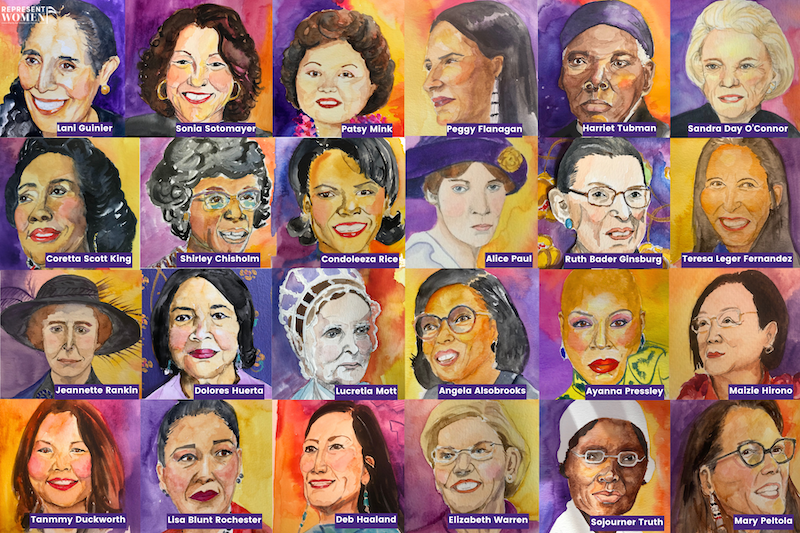
One hundred and five years later, RepresentWomen’s new 2025 Gender Parity Index shows just how unfinished that work remains: Despite some gains for women in state legislatures, half of U.S. states still earn a “D” grade for women’s representation.
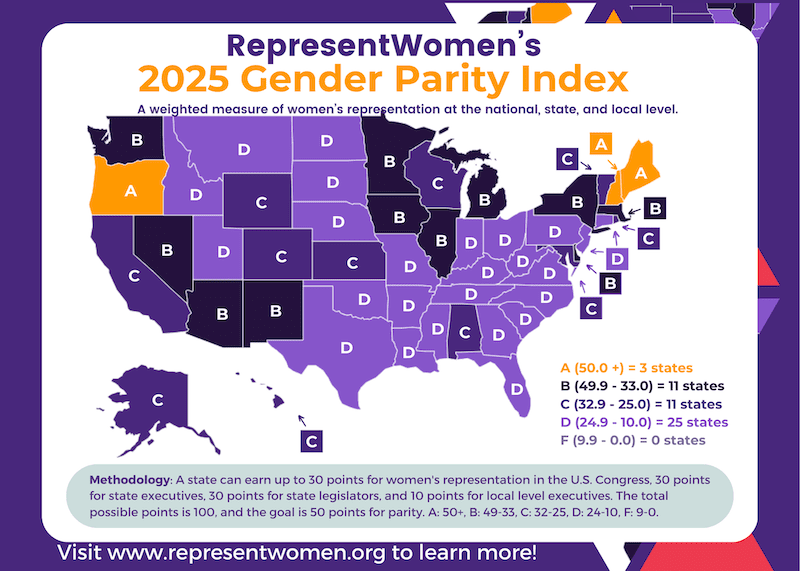
As Shaina Taub reminds us in the Broadway musical Suffs:
“Progress is possible, but it is not guaranteed,
It will only be made if we keep marching…
And rеmember every mother that you came from
Learn as much from our success as our mistakes
Don’t forget you’re merely one of many others
On the journey every generation makes
We did not end injustice and neither will you
But still, we made strides, so we know you can too.”
Those words resonate powerfully today. The 2025 Gender Parity Index shows that while strides have been made—with Maine, New Hampshire and Oregon earning an “A” this year—the U.S. is still far from true equality. More work is necessary.
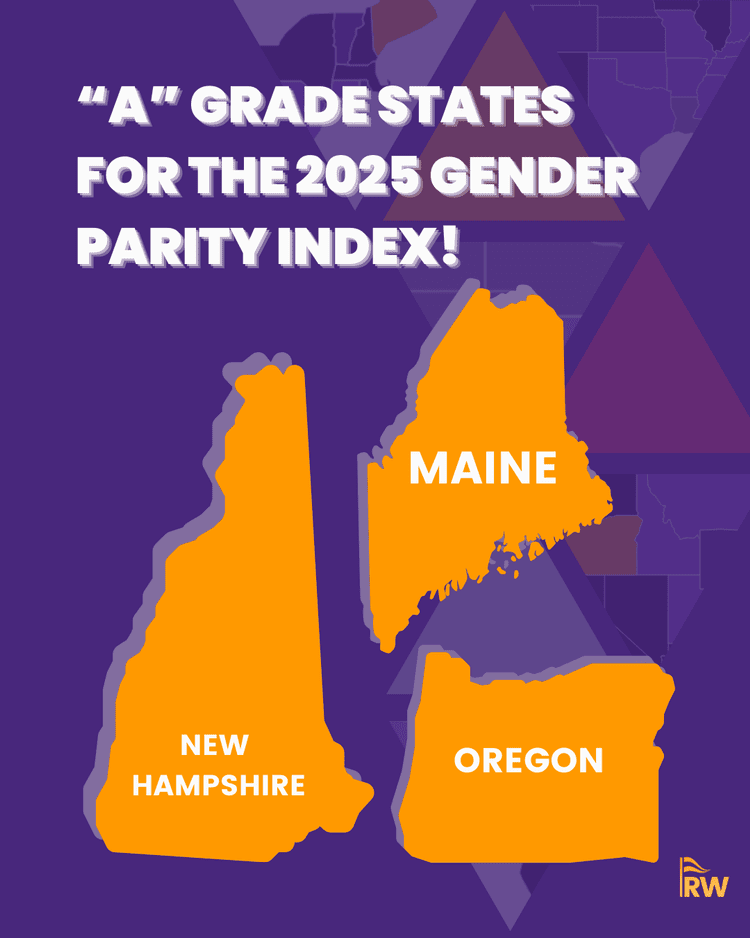
The numbers bear that out now, just as the suffragists recognized in their own time. They secured the ballot, but they also understood that voting alone would never guarantee equality. Real change required transforming a political system built to exclude women, immigrants and men of color.
As Jeannette Rankin, the first woman elected to Congress, famously said: “Men and women are like right and left hands; it doesn’t make sense not to use both.” Rankin knew that representation was only part of the fight. In her forthcoming book Winning the Earthquake, Lorissa Rinehart details how Rankin and other suffragists pressed for systemic electoral reforms—from a national popular vote to forms of ranked-choice voting and proportional representation.
More than a century later, their vision remains urgent. Such change is imperative now more than ever.
Rankin’s words feel prophetic today. Despite generations of activism, women remain underrepresented at nearly every level of government—particularly in the most powerful offices—even though they make up more than half the population and are turning out to vote at higher rates than any other group.
As of 2025, women make up just 28 percent of Congress, 24 percent of governors, 34 percent of state legislators and 25 percent of mayors in major cities.
Globally, the United States ranks 78th in the world for women in national legislatures, according to the Inter-Parliamentary Union, and perhaps more importantly, ranks behind nearly all our OECD allies.
The Council on Foreign Relations’ Women’s Power Index, created by Linda Robinson, offers another sobering lens. The U.S. ranks 60th worldwide in women’s power, with a score of just 36 out of 100—a failing grade that reflects the limited power women actually hold relative to their share of the population. Robinson’s analysis makes clear that women’s power cannot be measured by voting rights alone; it requires equal representation and influence across government, diplomacy and security.
This is not a matter of symbolism. It is a crisis for democracy.
When women serve, legislatures become more collaborative, more responsive and more focused on the everyday issues that matter most to families and communities. Without women, decision-making is narrower, less inclusive and more vulnerable to the authoritarian currents reshaping politics today. A democracy cannot claim legitimacy while half its population is locked out of power.
The Good News: We Know What Works
The fight for women’s equality is not stalled because women aren’t running for office. It is stalled because our systems are designed to protect incumbents and status quo candidates, and to limit competition—any gains made can be reversed with a single election cycle. It’s impossible to change the face of government if challengers have very few chances to win and incumbents have very little chance of losing.
The good news, though, is that we know how to fix those systems.
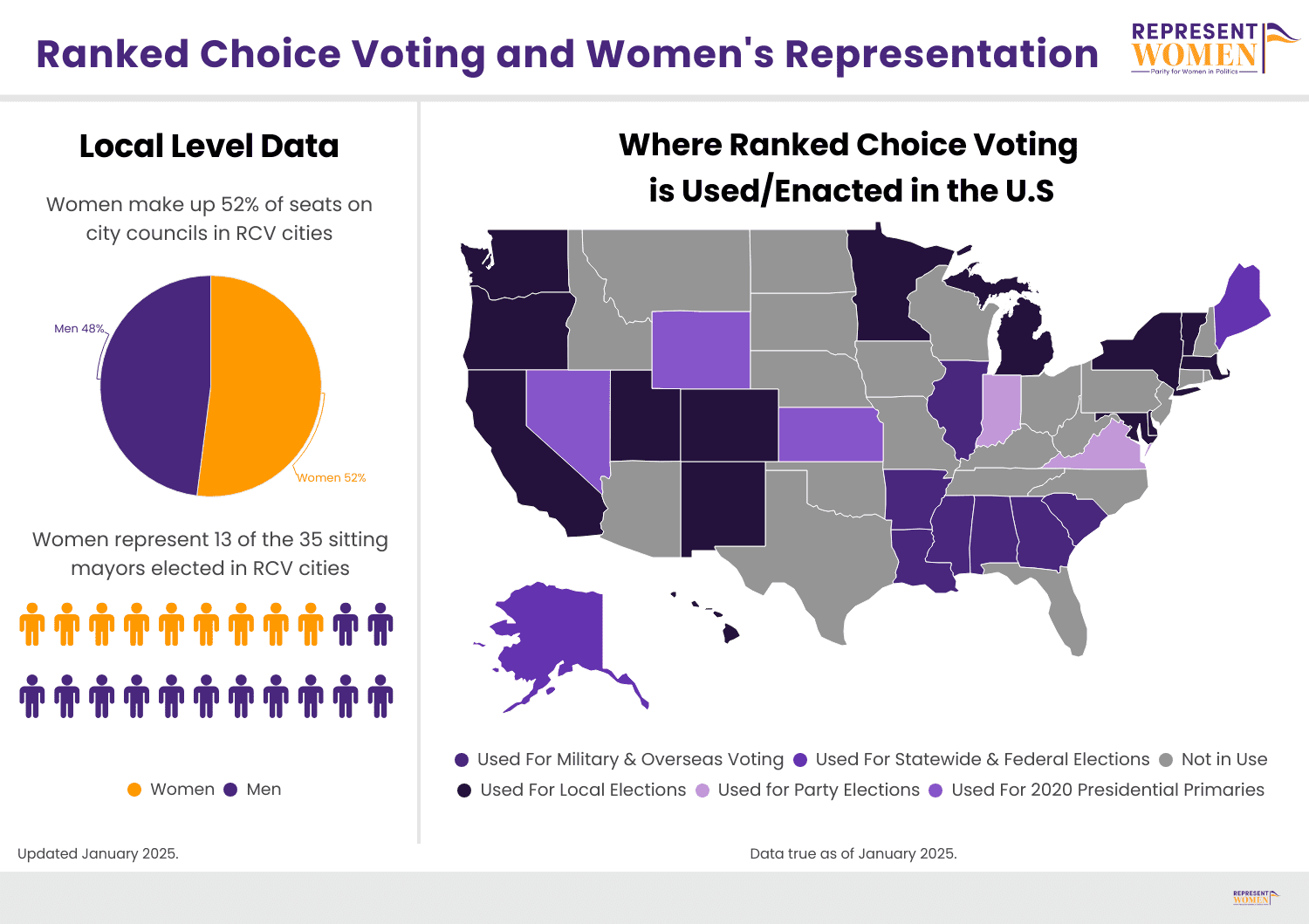
Ranked-choice voting is one reform already making a difference. Our winner-takes-all system is among the most voter-disempowering systems used globally, creating a range of built-in barriers that disenfranchise non-status quo candidates. With RCV, however, voters rank candidates instead of picking just one, giving them more voice and more choice, which in turn changes how candidates campaign. RCV rewards positive campaigning and coalition building, creating space for women and racial minorities to compete by removing the “wait your turn” argument often used against them.
Jurisdictions including Maine, Alaska, Utah, Santa Fe, New York City, San Francisco, St. Paul and Minneapolis are already seeing results, with more diverse leaders, more inclusive campaigns and more women winning office.
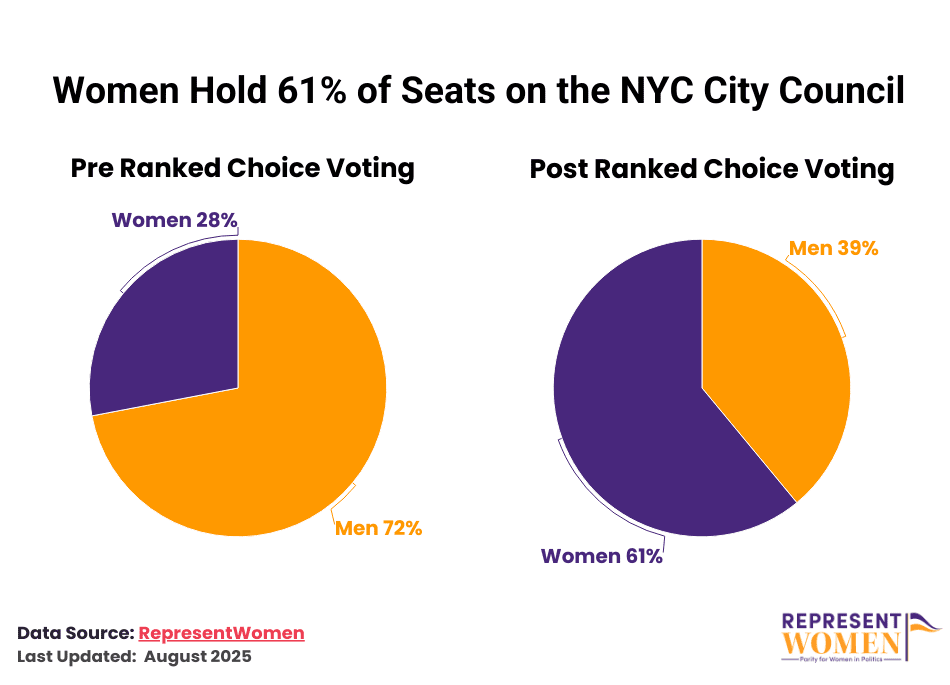
In fact, women hold 52 percent of seats on city councils that use RCV for their elections.
In 2021, NYC voters elected their first-ever woman-majority council under RCV, and women still hold 61 percent of those seats today.
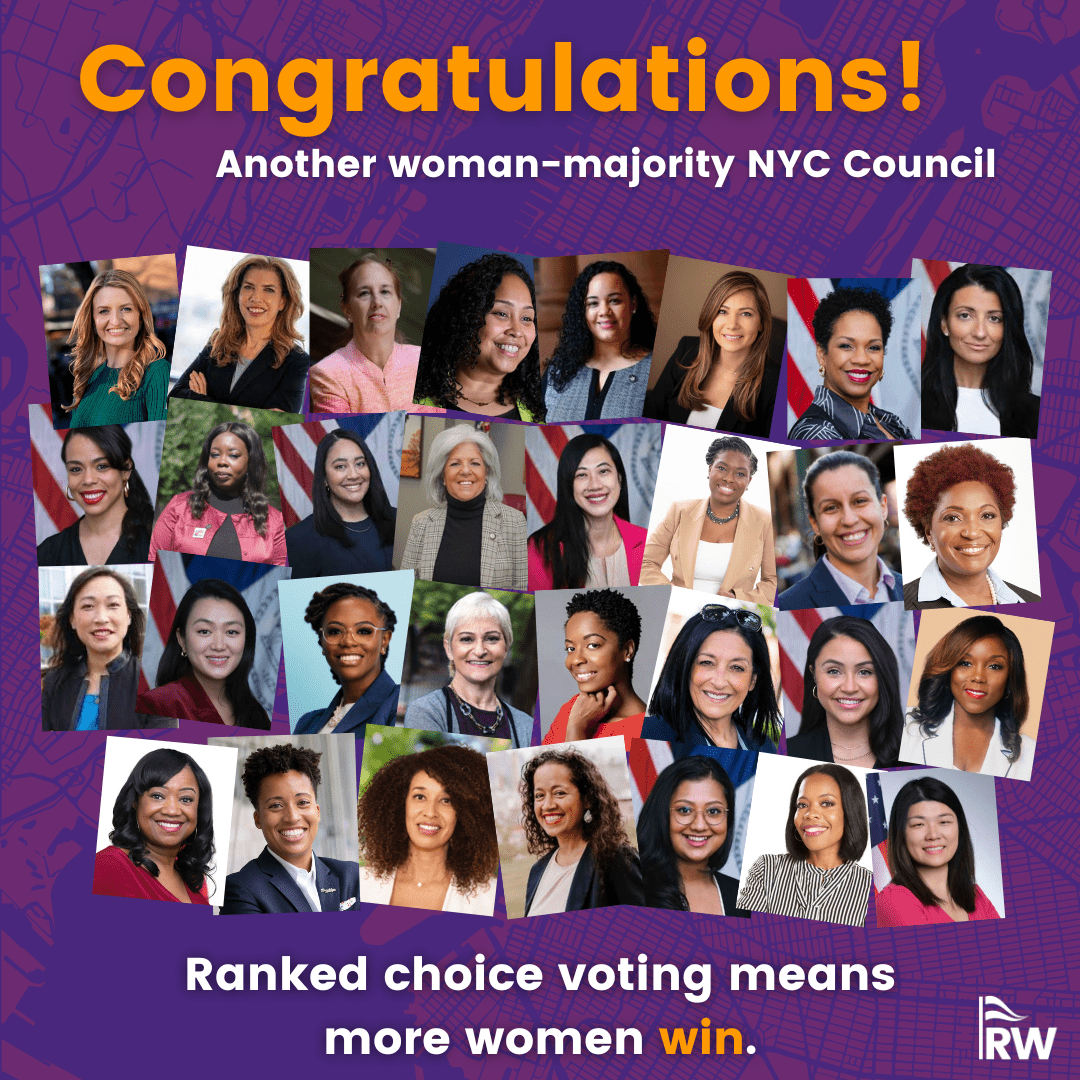
Former mayor of Oakland, Libby Schaaf, explains the impact of running in an RCV election:
“Because of RCV, I didn’t have to—nor did I choose to—engage in the typical campaign strategy of attacking the incumbent. My campaign was positive and respectful and that strategy paid off when the last round of transferred votes were counted.”
When used in multi-member districts, the impact of RCV is even more substantial. Portland, Ore., used proportional ranked choice voting for the first time in 2024, and the result was the most diverse council the city had ever seen. The Portland council has members from all areas of the city, including renters as well as homeowners, and has reached gender balance.
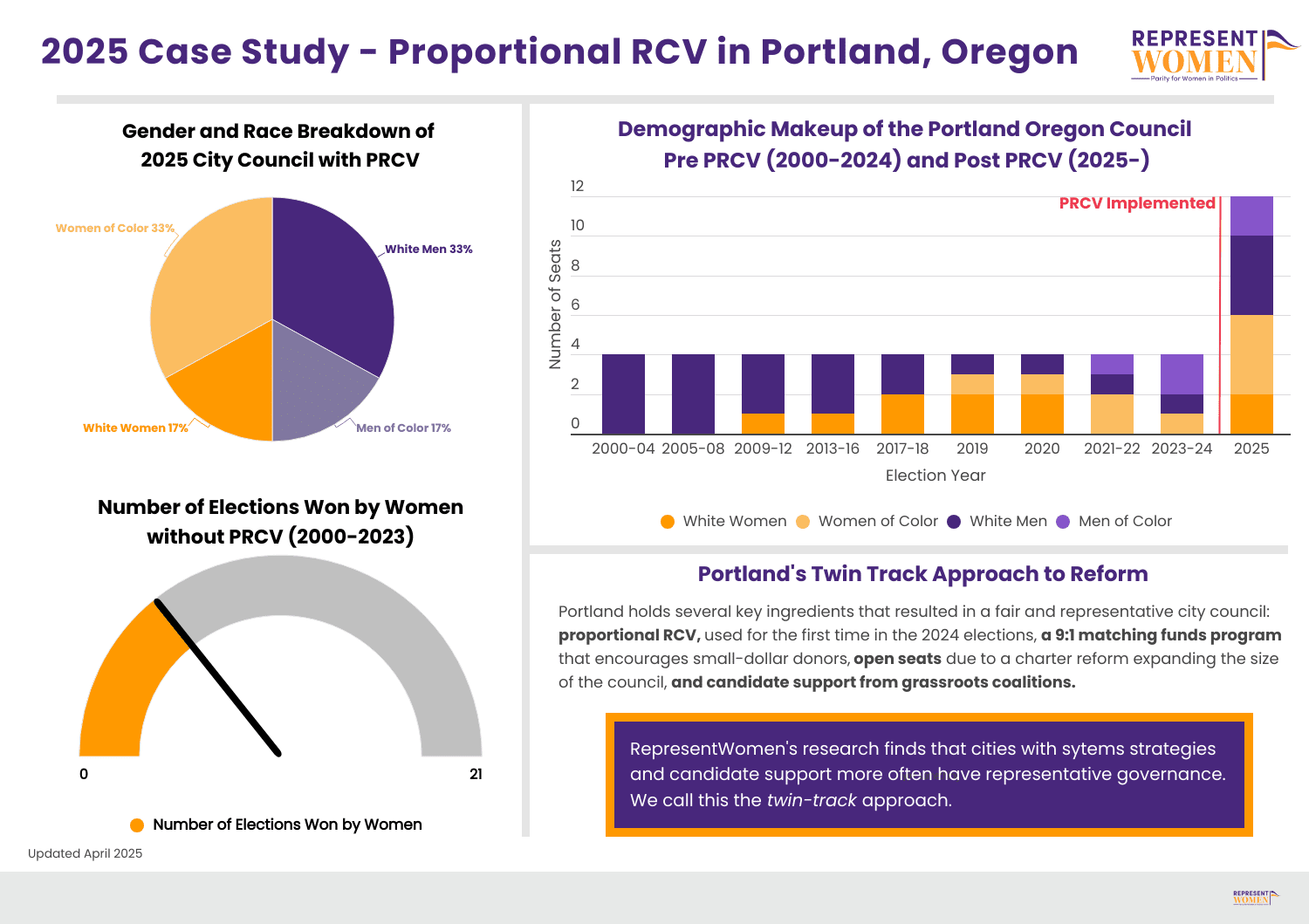
The global evidence is equally compelling. Our international research shows countries that consistently elect more women don’t simply have “better” women candidates—they have better systems. Tools like proportional representation and gender quotas directly address the barriers that prevent women from holding office. Australia’s Senate, for example, is elected through proportional ranked-choice voting and is now 57 percent female. It’s a model the United States can learn from and adapt, as the Fair Representation Act, now before Congress, would do on a national scale.
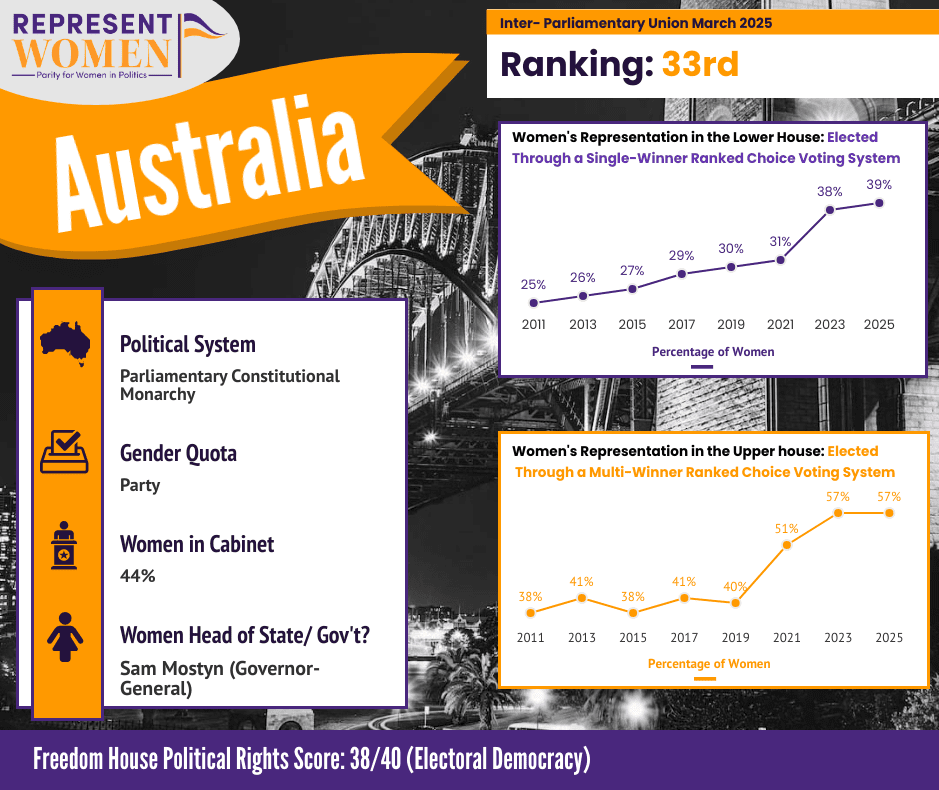
But even reforms that help more women win seats are only part of the solution. RepresentWomen also imagines a modern governmental workplace where more women officeholders can thrive. Policies like on-site childcare, proxy voting, gender-balanced appointments and fair pay for legislators are not luxuries — they are democratic necessities. Together, these reforms create a virtuous cycle: more women win, more women govern effectively and more young women see themselves as leaders.
Australia’s Senate … is elected through proportional ranked-choice voting and is now 57 percent female. It’s a model the U.S. can learn from and adapt, as the Fair Representation Act, now before Congress, would do on a national scale.
A Moment of Threat—and Opportunity
Women’s Equality Day arrives at a precarious moment. The threats to democracy are undeniable: voter suppression, extremist movements, and manipulated electoral rules that erode trust in government. But history reminds us that moments of crisis can also open the door to opportunities for change.
The suffragists embraced a time of political upheaval to create new opportunities for reform. They knew progress required more than patience—it demanded bold action to challenge entrenched power. Today, we face a similar crossroads.
Carrying the Torch Forward
The suffragists lit the torch, but it is ours to carry. Women’s Equality Day is not just about commemorating the past; it is a call to transform the future.
That means fighting for systems reforms that level the playing field, ensuring women’s representation is not the exception but the expectation. It means building a democracy that reflects the full diversity of its people — where women’s leadership is seen for what it is: essential to the survival of democracy itself.
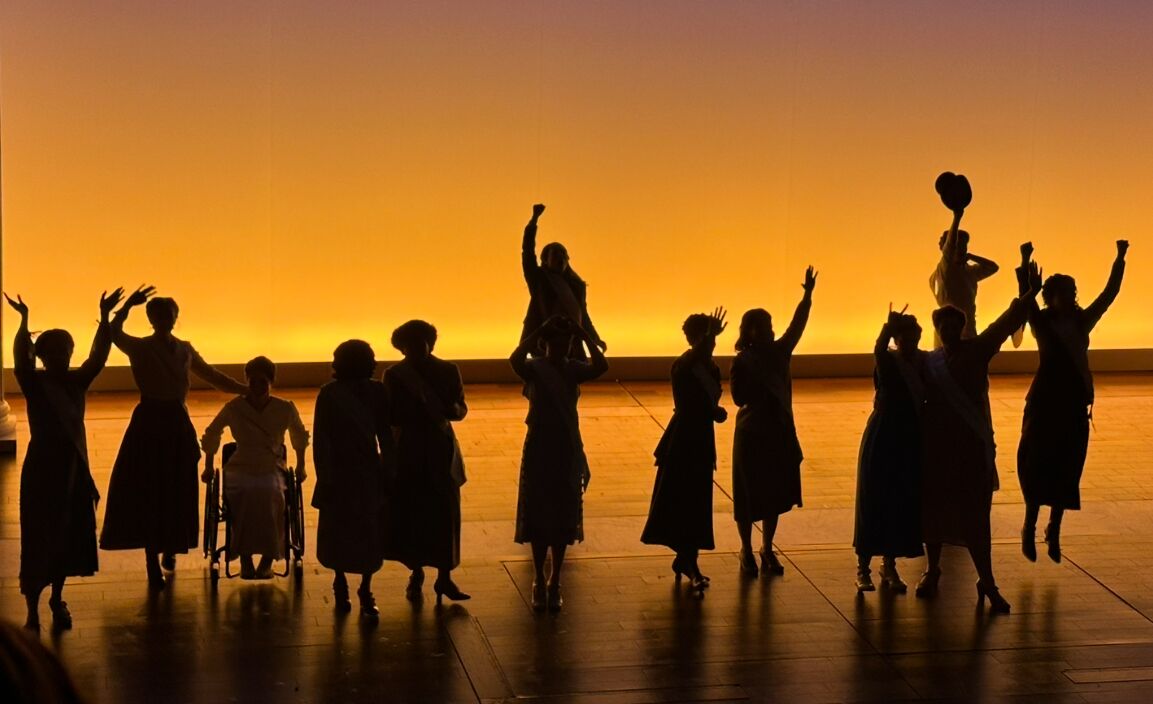
As Shaina Taub reminds us in Suffs:
“The gains will feel small and the losses too large
Keep marching, keep marching
You’ll rarely agree with whoever’s in charge
Keep marching, keep marching
‘Cause your ancestors are all the proof you need
That progress is possible, not guaranteed
It will only be made if we keep marching
Keep marching on (keep marching on)
Yes, the world can be changed, we’ve done it before
So keep marching (keep marching on), keep marching
We’re always behind you, so bang down the door
And keep marching (keep marching on), keep marching
And let history sound the alarm of how
The future demands that we fight for it now
It will only be ours if we keep marching
Keep marching on (keep marching on)”
On this Women’s Equality Day, the charge is clear: progress is not inevitable—it’s ours to fight for.
Great Job Cynthia Richie Terrell & the Team @ Ms. Magazine Source link for sharing this story.





